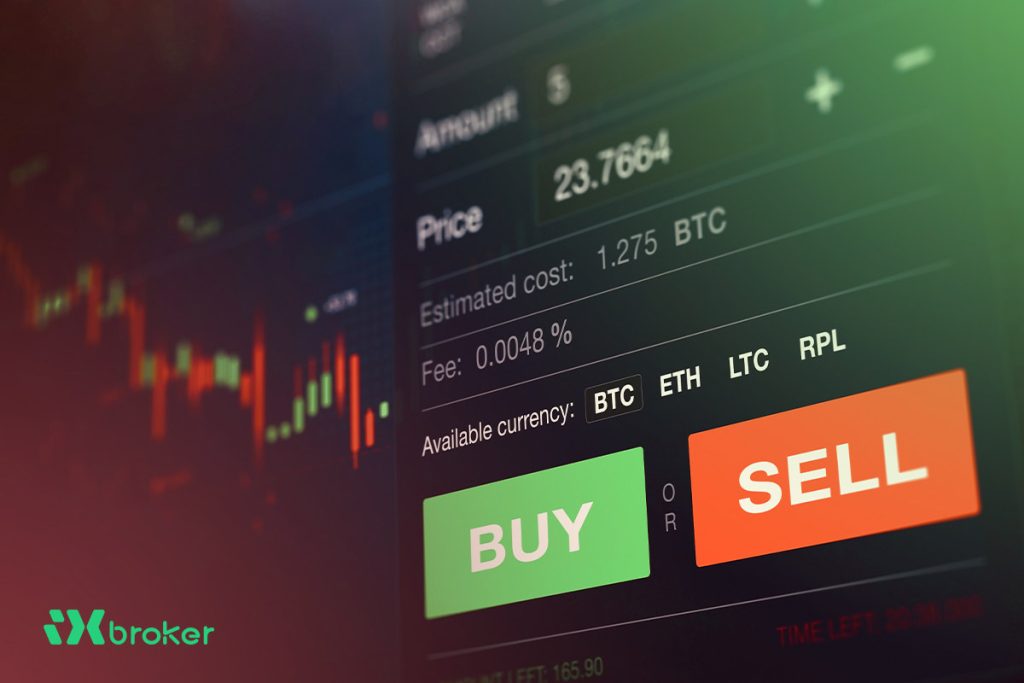Why PAMM is Becoming Popular in Forex? Forex trading, the largest financial market in the world, attracts millions of traders and investors. But not everyone has the knowledge, discipline, or time to trade actively. Some want exposure to forex profits without sitting for hours analyzing charts. This is where PAMM (Percentage Allocation Management Module) accounts come into play.
PAMM accounts allow investors to hand over trading responsibilities to experienced money managers. Investors put money into a shared pool, the manager trades, and profits or losses are distributed proportionally. It’s a win-win: investors benefit from professional trading skills, while managers earn performance fees and build their reputation.
What is PAMM in Forex?
PAMM stands for Percentage Allocation Management Module. It’s a system that connects investors with professional traders through a broker’s platform. Investors allocate funds to the trader, who then manages all accounts collectively.
In simpler terms:
- You deposit money into a PAMM account.
- A trader (money manager) makes trades using their strategy.
- Profits and losses are split among all investors based on their contributions.
For example:
- The manager invests $5,000 of their own money.
- 5 investors contribute $25,000 combined.
- Total pool = $30,000.
- Manager grows the account by 10% = $3,000 profit.
- Investors receive profits based on their share, minus the manager’s performance fee.
This model ensures fairness because the manager risks their own money alongside investors.
Key players in a PAMM system
A PAMM system works by connecting three main parties who make the investment process possible. Each player has a specific role that ensures the smooth running of the account and fair distribution of profits and losses. Understanding these roles helps investors see how their money is managed within the PAMM structure.
The Money Manager
- A professional trader responsible for executing trades.
- Usually invests personal capital to show commitment.
- Earns a performance fee (e.g., 20–30%) on investor profits.
Investors
- Provide capital, but don’t trade directly.
- Can allocate funds to one or multiple managers.
- Monitor performance in real-time via the broker’s platform.
Broker/Platform
- Hosts the PAMM system.
- Ensures transparent profit distribution.
- Provides legal, technical, and financial infrastructure.
How does a PAMM account work?
A PAMM account runs through a broker’s platform, and the process is straightforward:
Registration
Both investors and traders open accounts with a broker offering PAMM services.
Capital allocation
Investors choose a manager and allocate funds.
Trading phase
The manager trades using pooled funds.
Profit & Loss Distribution
Results are automatically split according to percentage contribution.
Fee deduction
The manager takes a performance commission.
Real example in numbers
- Investor A contributes $5,000.
- Investor B contributes $10,000.
- Manager contributes $5,000.
- Total = $20,000.
If the manager makes 15% profit ($3,000):
- Investor A gets $750 profit (before fees).
- Investor B gets $1,500 profit (before fees).
- Manager gets $750 profit on their funds + performance fee from investors.
Advantages of PAMM accounts
PAMM accounts are appealing for beginners and professionals alike.
For investors:
- Passive Income: No need to learn forex strategies.
- Diversification: Split funds across multiple managers.
- Transparency: Real-time monitoring of account performance.
- Aligned Interests: Managers invest their own capital, too.
- Automation: Everything from trade execution to profit sharing is automated.
For traders (managers):
- Access to more capital.
- Earn performance fees.
- Build a reputation in the forex community.
Risks of PAMM accounts
Like any investment, PAMM accounts come with potential downsides. While they offer convenience and professional management, investors must understand that risks are always present in forex. Being aware of these challenges helps you make smarter decisions and avoid unpleasant surprises.
- Market Volatility: Forex is unpredictable; losses happen.
- Manager Risk: A bad trader = bad results.
- Broker Risk: Unregulated brokers may mismanage funds.
- Limited Control: Investors can’t influence trades.
- High Drawdown: Aggressive managers may wipe out accounts.
IXBroker Tip: Only invest money you can afford to lose.
PAMM vs MAM vs LAMM
There are other account management systems similar to PAMM. Let’s compare:
PAMM (Percentage Allocation Management Module)
- Profits/losses are distributed proportionally.
- Transparent and beginner-friendly.
MAM (Multi Account Manager)
- Managers can adjust risk settings per investor.
- More flexible but more complex.
LAMM (Lot Allocation Management Module)
- Trades copied lot-for-lot.
- Suitable for investors with similar account sizes.
PAMM = best for beginners. MAM = best for professionals with varied clients. LAMM = best for equal-sized accounts.
How to choose the right PAMM manager?
Your manager determines your success. Before investing, analyze:
Track Record, Look for consistent profits over 1–2 years. Drawdown, Avoid managers with >30% drawdowns. Capital Invested, Managers with more “skin in the game” are safer.
Trading Style, Conservative or aggressive? Pick based on your risk tolerance. Broker’s Reputation, Stick with regulated brokers. Red Flag, Managers promising guaranteed profits. Nothing in forex is guaranteed.
Steps to start investing in a PAMM account
Getting started with PAMM investing is pretty straightforward, but it’s essential to follow the process carefully to avoid mistakes. The steps are designed to help you choose the right broker, select a reliable money manager, and monitor your funds effectively. By approaching PAMM investment methodically, you increase your chances of long-term success while minimizing unnecessary risks.
Step 1:
Select a Reliable Broker: Choose a regulated and well-known forex broker that offers PAMM accounts. Regulation ensures transparency and security of funds.
Step 2:
Open an Investor Account: Register on the broker’s platform, verify your identity, and fund your account.
Step 3:
Browse PAMM Rankings: Brokers usually provide a list of PAMM managers along with performance stats, ROI, drawdown levels, and trading history.
Step 4:
Choose a Manager: Select a manager whose trading style and risk level align with your investment goals.
Step 5:
Allocate Funds: Decide how much capital you want to invest with the chosen manager(s). Diversify across multiple managers if possible.
Step 6:
Monitor Performance: Regularly track results and watch for changes in strategy or risk.
Step 7:
Withdraw or Reinvest: Based on your goals, you can either take profits out or reinvest them to benefit from compound growth.
Strategies for PAMM investors
Investing in a PAMM account is not just about choosing a manager and waiting for profits. To maximize returns and reduce risks, investors need to adopt innovative strategies. A well-planned approach ensures that you don’t rely on luck alone but instead make informed decisions that improve your chances of long-term success. Below are some of the most effective strategies every PAMM investor should consider.
Key Strategies:
- Instead of allocating all your funds to one manager, spread your capital across multiple PAMM managers with different trading styles. This reduces the impact of one trader’s poor performance.
- Begin with a small allocation to test the manager’s reliability. If consistent results are achieved, gradually increase your investment.
- Compounding is powerful. Reinvesting profits over time can grow your capital significantly.
- Choose managers who align with your risk appetite. Conservative investors should avoid aggressive, high-drawdown managers.
- Avoid making emotional decisions after short-term losses. Focus on steady, consistent growth instead of chasing quick profits.
- Keep an eye on manager performance and market conditions. If a trader’s strategy changes or risk increases, consider reallocating funds.
Real-life example of PAMM investing
Imagine Investor John invests $5,000 with a PAMM manager who has a 3-year track record and average monthly returns of 5%.
- Month 1: 5% return = $250 profit.
- Month 2: -3% return = $150 loss.
- Month 3: 8% return = $400 profit.
After 3 months, John’s account balance = $5,500+. Even with losses, the long-term result is positive. This demonstrates the importance of patience and realistic expectations.
PAMM for beginners vs professionals
When it comes to PAMM accounts, the benefits and approach can look very different depending on whether you are a beginner investor or a professional trader. Understanding these differences is crucial to setting the right expectations.
PAMM for Beginners
For beginners, PAMM is often the easiest entry point into forex investing. Many newcomers don’t have the time or skills to analyze charts, follow global news, or manage risk effectively. A PAMM account allows them to benefit from the experience of seasoned traders while learning about the forex market in a safe and structured environment.
Key benefits for beginners:
- Passive investing: No need for trading knowledge or strategies.
- Learning opportunity: By observing manager performance, beginners can understand market behavior.
- Low entry barrier: Some brokers allow minimum deposits as low as $100.
- Diversification made simple: The Ability to spread funds across multiple managers.
PAMM for professionals
For experienced traders, PAMM offers an opportunity to grow their reputation and earn additional income. Instead of only trading with their own capital, professionals can attract investors who allocate funds to them, multiplying their trading power. In return, they earn a performance fee for successful trades.
Key benefits for professionals:
- Access to more capital: Manage larger accounts by attracting investors.
- Reputation building: Consistent profits attract more investors over time.
- Extra income stream: Performance fees can become a significant source of income.
- Leverage skills: Professionals maximize the impact of their strategies.
Common mistakes to avoid in PAMM
While PAMM accounts can be a great way to invest in forex passively, many beginners make mistakes that cost them money and confidence. These mistakes often come from rushing into investments, chasing high returns, or not doing enough research on brokers and managers. By being aware of the most common errors, you can avoid unnecessary risks and create a smoother investing journey.
Chasing High ROI Managers, Don’t get blinded by flashy double-digit returns. High ROI often comes with extreme risk. Ignoring Drawdowns, always check the maximum drawdown in a manager’s history. Significant past losses may happen again.
Not researching the Broker, an unregulated or unreliable broker can be riskier than a bad trader. Stick with licensed platforms. Putting All Money in One Manager, Lack of diversification is dangerous. Spread your investments to reduce exposure.
Expecting Guaranteed Profits, Forex is volatile; no system or manager can guarantee success every month. Investing Without a Plan, Treat PAMM as part of your overall financial strategy, not a get-rich-quick scheme.
Conclusion
PAMM in forex offers an exciting way to profit from the currency markets without direct trading. Investors benefit from professional expertise, while traders can grow their income by managing pooled capital.
But PAMM is not risk-free. Choosing the right manager and broker, diversifying across accounts, and setting realistic expectations are key.
If you’re looking for a passive, transparent, and automated forex investment model, PAMM can be a great addition to your portfolio, provided you approach it with caution and patience.




